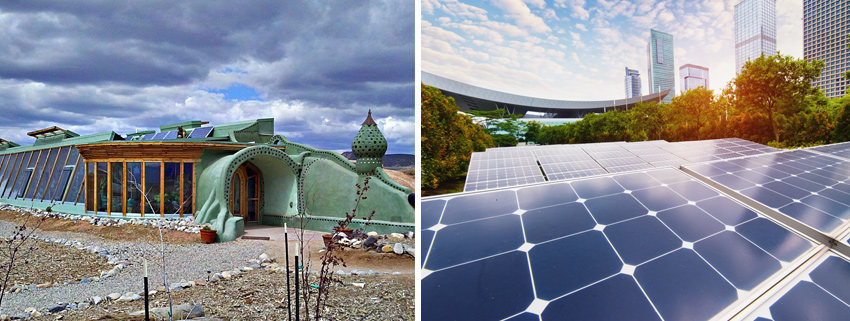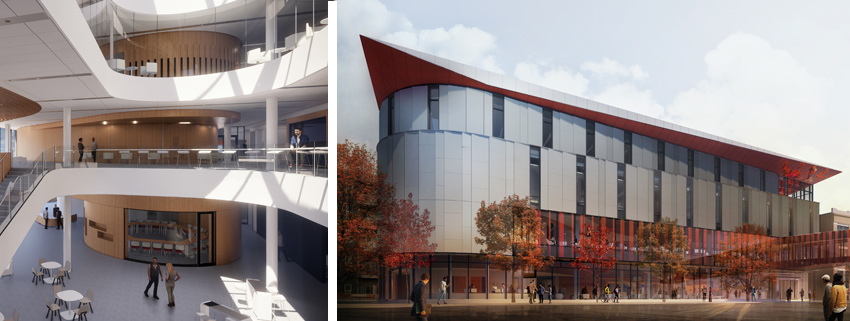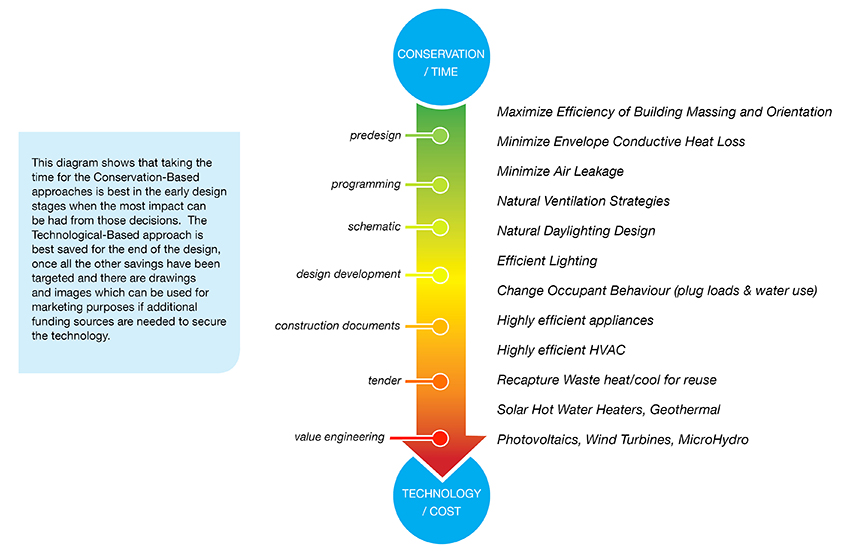
By Amanda Ross, Architect
Can designing better buildings reduce the impacts of climate change? Can we make every new building carbon neutral? The answer is resoundingly yes. As architects, we have the knowledge, capability and technology to do this today. When it comes to designing more environmentally friendly buildings, the approach we take makes all the difference.

Image: The City of Vancouver has a goal of being carbon neutral by 2030 (Photo: iStock)
To achieve carbon neutral buildings, two main strategies are typically used by architects today:
The technological approach: Using the best (and sometimes most costly) technology like geothermal pumps, photovoltaics wind turbines and other readily available renewable technologies to supply power.
Or
The conservation approach: Changing occupant behaviour, building design, and systems to minimize energy and water needs and maximize passive energy capture and reuse, so that minimal active building systems are required.
The pitfalls of these two extremes have been wielded as arguments against the viability of sustainable design for decades. Opponents to the conservation approach claim that it is too time consuming, too restrictive to design, and abandons user needs in favour of efficiency.

Image (left): Earthship - stereotype of conservation approach (Photo: By Dameon Hudson / CC BY 3.0) | Image (right): Solar Panel Farm - stereotype of technological approach (Photo: iStock)
Alternatively, the technological approach is often discounted as being too expensive and taking too much land for solar panels, wind turbines or geothermal fields. Fortunately, there are many fantastic projects out there today that prove that there is a happy middle ground where carbon neutral buildings can meet both the needs of users, and the budgets of investors and building owners.

Image: Red River College Innovation Centre - net zero energy by using a combination of energy conservation and energy technology
(Renders: Diamond Schmitt Architects | Project: Number TEN Architectural Group in joint venture with Diamond Schmitt Architects)
When designing a net zero building, it is nice to start with the conservation approach during the programming, proposal, and schematic phases. Essentially, we’re trying to reduce the energy budget as much as possible.

Be creative and think holistically. Is the ventilation the biggest energy hog, and is it possible to rearrange the architecture to implement natural or displacement ventilation? Once we’ve reduced the energy budget as far as possible, try to size the systems, review with the team, brainstorm and resize again.
Does the west-facing commercial kitchen require a chiller while the north-facing library needs extra heat? Is there a way for these two needs (cooling and heating) to help each other? The advantage to asking these types of questions is that significant holistic reductions may lead to downsizing or even entirely eliminating building systems. Not having to purchase extra mechanical equipment can, in turn, free up a lot of extra cash to purchase more or better renewables.
Iterative programs like Cove.tool or Sefaria can be a convenient way to work through various massing options. These software packages can save a lot of time up front and possibly identify options for savings that might have otherwise been missed.
There are a lot of other programs, (including free REVIT Insight plugins) to investigate non-massing options, including the most efficient options for:
• window to wall ratio (WWR);
• R-value of the insulation;
• mechanical systems;
• daylighting, air infiltration and more.
It can take a little time to work through these options, but, in my experience, it has been worth it to clarify not only what the best options are, but also the big factors that are driving a project’s energy performance. In many cases, the results can be surprising. Keeping these factors under control means fewer solar panels/geothermal wells, which in-turn helps keep the project on-budget.
These approaches, when implemented correctly, make net-zero design a realistic possibility for projects with reasonable funding and creative integrated project teams.